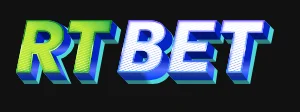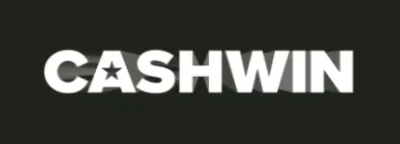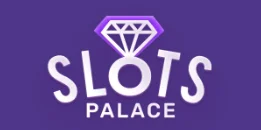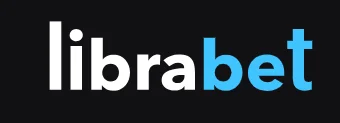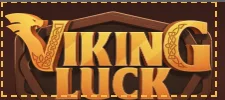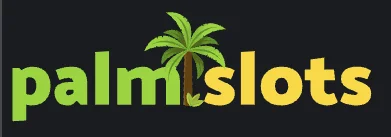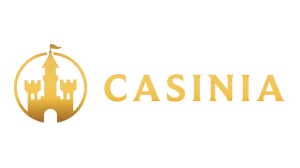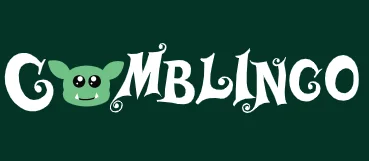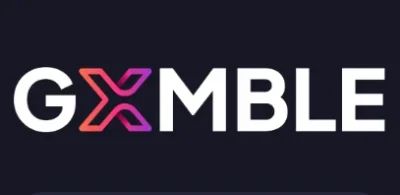Las Mejores Slots Online en España para Disfrutar y Ganar
En el vibrante mundo del entretenimiento digital, las opciones para disfrutar de emocionantes experiencias de juego son infinitas. Si buscas diversión y la oportunidad de ganar, hay un sinfín de alternativas que te cautivarán.
100% hasta €500 + 200 giros gratis + 1 bonus crab
100% hasta €500 + 200 giros gratis + 1 bonus crab
100% hasta €500 + 200 tiradas gratis + 1 bonus crab
100% up to €1000 + 50 giros gratis
260% HASTA €2600 + 260 GIROS GRATIS
200 % hasta 200 EUR + 50 FS
100% hasta 425€ + 200FS + 1 Bonus Crab
Bono 100 % hasta €500 +200FS + 1 Bonus crab
Hasta €1,000 en 3 bonificaciones
100% hasta 150 € + 150 Tiradas Gratis
100 % hasta €500 + 200 tiradas
Bonificación por primer depósito €100
100% hasta €500 + 200 tiradas gratis +1 Bonus crab
- Bono del 400 % + 100 giros gratis
- Bono del 400 % + 50 giros gratis
- Bono del 400 % + 30 giros gratis
Bono del 400 % + 100 giros gratis
Up to €1200 + 150 Giros gratis
- 1st – 100% up to 500€
- 2nd – 100% up to 750€
- 3rd – 100% up to 1250€ (Total: 300% up to 2500€) * 10% cashcabs for VIPs
1st – 100% up to 500€
Te invitamos a explorar un universo lleno de sorpresas y premios que te harán sentir la adrenalina al máximo. Los casinos recomendados están regulados por la Malta Gaming Authority, lo que garantiza su fiabilidad, y nuestra lista incluye solo los mejores casinos online disponibles. Es importante verificar la disponibilidad y regulaciones locales en su región antes de empezar a apostar.
Introducción a las Slots Online en España
Las slots online son uno de los juegos de casino más populares en España, y su popularidad no ha dejado de crecer en los últimos años. Con la llegada de la tecnología y la expansión de los casinos online, los jugadores españoles pueden disfrutar de una amplia variedad de slots en línea desde la comodidad de sus hogares. La facilidad de acceso y la diversidad de opciones han hecho que cada vez más personas se sumen a esta emocionante forma de entretenimiento.
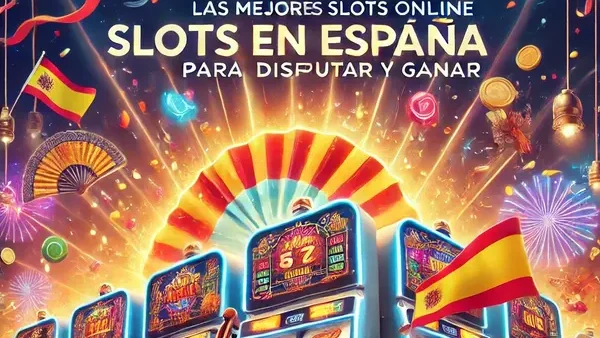
Además, los casinos online en España están regulados por la Dirección General de Ordenación del Juego (DGOJ), lo que garantiza un entorno seguro y justo para todos los jugadores. Así que, si estás buscando una manera divertida y potencialmente lucrativa de pasar tu tiempo libre, las slots online son una excelente opción.
¿Por qué Elegir Estas Experiencias de Juego?
Sumergirse en estas dinámicas de juego no solo es entretenido, sino que también ofrece la posibilidad de obtener recompensas significativas. La combinación de gráficos cautivadores y sonidos envolventes crea un ambiente único que atraerá tanto a novatos como a expertos. Muchas de estas experiencias de juego están disponibles a través de una app móvil, optimizada para dispositivos iOS y Android. Las tragaperras online ofrecen una experiencia de juego dinámica y emocionante. ¿Listo para dar el salto?
Beneficios Clave de Jugar
- Variedad de Temáticas: Desde aventuras épicas hasta historias de misterio, siempre hay algo nuevo que descubrir.
- Bonificaciones Atractivas: Aprovecha ofertas que aumentan tus posibilidades de ganar.
- Acceso Inmediato: Disfruta de tus juegos favoritos desde la comodidad de tu hogar. Además, los juegos también se pueden disfrutar directamente desde el navegador, ofreciendo una experiencia similar a la de un ordenador. Es importante jugar en un sitio web optimizado y con licencia para garantizar una experiencia de juego segura y confiable.
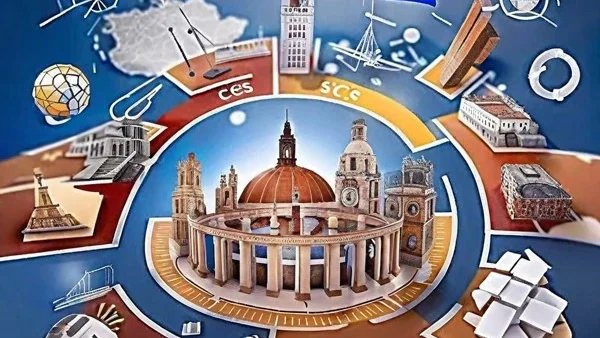
Tipos de Slots Disponibles en los Casinos Online de España
Los casinos online en España ofrecen una amplia variedad de slots para que los jugadores puedan elegir. Algunos de los tipos de slots más populares incluyen:
- Tragaperras clásicas: Estas son las slots tradicionales con 3 carretes y símbolos clásicos como frutas, campanas y sietes. Son perfectas para aquellos que prefieren una experiencia de juego más sencilla y nostálgica.
- Video slots: Estas son las slots modernas que cuentan con gráficos avanzados, animaciones y múltiples líneas de pago. Suelen incluir rondas de bonificación y características especiales que hacen el juego más dinámico y emocionante.
- Slots progresivos: Estas son las slots que ofrecen jackpots que crecen con cada apuesta realizada por los jugadores. Los jackpots progresivos pueden alcanzar sumas millonarias, lo que añade un nivel extra de emoción y expectativa al juego.
Con tantas opciones disponibles, los jugadores en España pueden disfrutar de una experiencia de juego variada y emocionante, adaptada a sus preferencias personales.
Cómo elegimos los mejores slots online con Slots en España
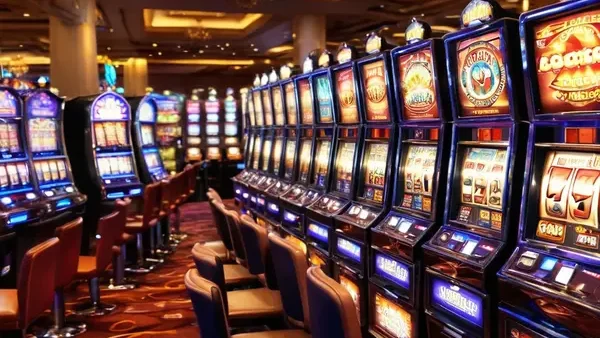
Seleccionar plataformas de juego con tragamonedas no es una tarea sencilla. Implica considerar múltiples factores que aseguran una experiencia entretenida y segura. Nuestro enfoque se basa en analizar detalladamente cada sitio para ofrecerte opciones que cumplan con los más altos estándares de calidad y diversión.
¿Qué son los Slots Megaways y Cómo Funcionan?
Los slots Megaways son una innovadora mecánica de juego que cambia la cantidad de símbolos en los rodillos en cada giro, ofreciendo miles de formas de ganar. Esta mecánica fue introducida por el proveedor de software Big Time Gaming y ha revolucionado la forma en que se juegan las slots online. En lugar de tener un número fijo de líneas de pago, los slots Megaways pueden ofrecer hasta 117,649 formas de ganar en un solo giro. Esto se logra mediante la variación del número de símbolos que aparecen en cada rodillo, lo que crea una experiencia de juego dinámica y emocionante. Los slots Megaways son una forma popular de jugar slots en línea y pueden encontrarse en muchos casinos online en España, ofreciendo a los jugadores una experiencia de juego única y llena de posibilidades.
En resumen, las slots online son un juego de casino popular en España que ofrece una amplia variedad de opciones para los jugadores. Desde tragaperras clásicas hasta slots progresivos, hay algo para todos. El RTP es importante para ayudar a los jugadores a tomar decisiones informadas sobre qué juegos de slots jugar. Los slots Megaways son una forma emocionante de jugar slots en línea y ofrecen miles de formas de ganar.
Consejos para Aprovechar al Máximo Tu Experiencia
Para sacar el máximo provecho de tus sesiones de juego, considera algunos consejos prácticos:
- Familiarízate con las reglas: Conocer cómo funcionan los juegos y el RTP (porcentaje de retorno al jugador) es fundamental para aumentar tus posibilidades de éxito.
- Establece un presupuesto: Jugar de manera responsable es clave para disfrutar sin preocupaciones.
- Explora diferentes opciones: No te limites a una sola, ¡la variedad es la sal de la vida!
Frase Inspiradora
“Cada giro puede ser el que cambie tu suerte. ¡Atrévete a intentarlo!”
Así que, ¿estás listo para embarcarte en una aventura llena de emoción y oportunidades? La diversión te espera con los brazos abiertos. ¡No dejes pasar la oportunidad de ser parte de este emocionante mundo!
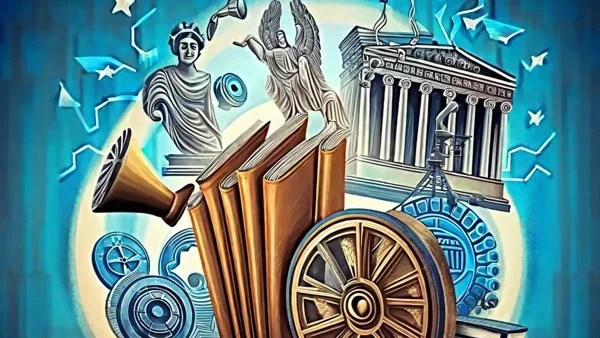
TOP 66 Casinos con las Mejores Tragaperras
Si eres un aficionado de las máquinas de juego, estás en el lugar indicado. Aquí te presentamos una selección de los casinos que ofrecen las experiencias más emocionantes y los juegos más entretenidos del sector. Con una amplia variedad de opciones, podrás disfrutar de gráficos impresionantes, innovadoras mecánicas de juego y, por supuesto, la oportunidad de ganar grandes premios.
Criterios para elegir un casino:
- Variedad de juegos disponibles
- Seguridad y licencias
- Métodos de pago
- Atención al cliente
- Proveedores de software: Es fundamental que el casino colabore con proveedores de software reconocidos como NetEnt y Microgaming. Estos proveedores garantizan una experiencia de juego superior, con mejores gráficos y características innovadoras.
¿Qué Buscar en un Casino?
Antes de sumergirte en la acción, es esencial conocer los aspectos clave que hacen a un casino destacar. Estos son algunos de los criterios que te ayudarán a elegir el mejor sitio para tus aventuras:
- Variedad de juegos disponibles
- Bonos y promociones atractivas
- Facilidad de uso de la plataforma
- Soporte al cliente eficiente, incluyendo la disponibilidad de un chat en vivo para resolver dudas rápidamente
- Opiniones de otros jugadores
Tabla de Casinos Recomendados
| Nombre del Casino | Bonos Iniciales | Variedad de Juegos | Valoración |
|---|---|---|---|
| Bono Star | 100% hasta €500 | 500+ | 4.8/5 |
| Slotokit | 50 giros gratis | 600+ | 4.7/5 |
| Biz TOP | 200% hasta €300 | 450+ | 4.5/5 |
| Casino Slot | 75% hasta €250 | 700+ | 4.6/5 |
Consejos para Jugar
Ahora que tienes una lista de opciones, aquí van algunos consejos prácticos para maximizar tu diversión:
“Siempre establece un presupuesto y cúmplelo, así disfrutarás sin preocupaciones.”
Además, es fundamental que pruebes las versiones gratuitas de los juegos antes de apostar dinero real. Esto te permitirá familiarizarte con las dinámicas y encontrar tus favoritos sin riesgo alguno.
Conclusiones
La elección del casino ideal es un paso crucial para vivir una experiencia de juego satisfactoria. Con esta lista y nuestros consejos, estás más que preparado para adentrarte en el fascinante mundo de las máquinas de juego. ¡Buena suerte y que la diversión no pare!
Las mejores tragaperras en España 2025
El mundo de los juegos de azar sigue evolucionando, ofreciendo experiencias cada vez más emocionantes para los entusiastas. En este 2025, se han lanzado una serie de máquinas que prometen no solo diversión, sino también la posibilidad de ganar a lo grande. Aquí te contamos qué buscar para disfrutar de las mejores experiencias y maximizar tus oportunidades. Las mejores tragaperras en España para 2025 incluyen juegos con múltiples líneas de pago, lo que aumenta las oportunidades de ganar.
Innovaciones y Temáticas
Las últimas incorporaciones en este ámbito se destacan por su creatividad y tecnología de vanguardia. Desde gráficos impresionantes hasta tramas envolventes, cada título ofrece una historia única que atrae a jugadores de todos los niveles. Las temáticas van desde aventuras épicas hasta elementos de la cultura pop, asegurando que siempre haya algo nuevo que descubrir.
Bonificaciones y Premios
Las promociones son clave a la hora de elegir una máquina. Las ofertas varían y pueden incluir giros gratis, multiplicadores y premios acumulativos. Aquí te dejamos un resumen de las bonificaciones más atractivas disponibles:
| Juego | Bonificación | Premio Máximo |
|---|---|---|
| Aventura Espacial | 100 Giros Gratis | €50,000 |
| Mitos Antiguos | Multiplicador x5 | €30,000 |
| Cultura Pop | Rondas Bonus | €40,000 |
Experiencia del Jugador
La interfaz y la jugabilidad son esenciales. Las plataformas actuales se centran en crear una experiencia fluida y agradable. Desde la facilidad para realizar depósitos hasta la rapidez en los retiros, cada detalle cuenta. Además, la atención al cliente es fundamental; un buen servicio puede marcar la diferencia entre una experiencia positiva y una decepcionante. La facilidad y seguridad en los métodos de pago es esencial para una experiencia de juego positiva.
Consejos para Jugar con Éxito
Para aprovechar al máximo tu tiempo de juego, considera estos consejos:
- Establece un presupuesto antes de comenzar a jugar.
- Infórmate sobre las reglas de cada juego.
- Prueba versiones demo para familiarizarte sin arriesgar dinero.
- Aprovecha las promociones y bonificaciones disponibles.
En resumen, el año 2025 promete ser emocionante para los aficionados a las máquinas de azar. Con innovaciones constantes y opciones atractivas, seguro encontrarás algo que se adapte a tu estilo y te brinde diversión sin límites.
Temática y Diseño
El ambiente que rodea a este juego es fascinante. Los gráficos y sonidos están diseñados para sumergirte en la época de los faraones, donde cada giro puede traer consigo grandes recompensas. La simbología, desde sarcófagos hasta deidades, refuerza la conexión con la historia antigua, haciendo que cada partida sea una aventura única.
Mecánica del Juego
La jugabilidad es intuitiva y dinámica, lo que permite a los jugadores de todos los niveles disfrutar de la experiencia. Las características principales incluyen:
- Rondas de bonificación emocionantes.
- Oportunidades de multiplicadores de ganancias.
- Un símbolo expansivo que puede aumentar las posibilidades de éxito.
Bonificaciones y Premios
Una de las razones por las cuales “Legacy of Dead” es tan popular son sus atractivas bonificaciones. Aquí te dejamos un resumen de lo que puedes encontrar:
- Rondas de giros gratis que pueden reactivarse.
- Múltiples oportunidades de ganar en cada sesión.
- Premios progresivos que aumentan la emoción del juego.
Consejos para Jugadores
Para maximizar tu experiencia, considera estos consejos:
- Establece un presupuesto antes de comenzar.
- Familiarízate con las reglas y la tabla de pagos.
- Aprovecha las bonificaciones cuando estén disponibles.
Opiniones de Jugadores
Los comentarios de quienes han probado “Legacy of Dead” suelen ser muy positivos. Muchos destacan su atractivo visual y la emoción que genera cada giro. Como dice uno de los jugadores:
“Cada partida es como un viaje al pasado, lleno de sorpresas y posibilidades.”
Así que, si buscas una experiencia que combine historia, misterio y la posibilidad de grandes premios, no dudes en darle una oportunidad a “Legacy of Dead”. Su universo te espera con los brazos abiertos. ¡Buena suerte en tu aventura!
Cómo elegimos los mejores casinos con Slots en España
Seleccionar plataformas de juego con tragamonedas no es una tarea sencilla. Implica considerar múltiples factores que aseguran una experiencia entretenida y segura. Nuestro enfoque se basa en analizar detalladamente cada sitio para ofrecerte opciones que cumplan con los más altos estándares de calidad y diversión. Es crucial verificar si la página web del casino muestra el logo de Juego Seguro para confirmar su legalidad. Además, es importante que el sitio web del casino esté optimizado y cuente con licencia para garantizar una experiencia de juego segura y confiable.
Evaluación de la Licencia y Seguridad
La confianza es fundamental al elegir un lugar para jugar. Verificamos que cada casino cuente con licencias válidas y reconocidas, lo que garantiza que operan de manera legal y segura. Además, analizamos las medidas de protección de datos y las tecnologías empleadas para resguardar la información personal de los usuarios.
Variedad de Juegos Disponibles
Un buen sitio debe ofrecer una amplia gama de opciones para que los jugadores puedan disfrutar. Examinamos la diversidad de juegos, desde clásicos hasta innovaciones recientes, asegurando que siempre haya algo nuevo que probar.
- Tragamonedas clásicas
- Tragamonedas de video
- Tragamonedas progresivas
- Temáticas especiales
Bonos y Promociones
Las ofertas atractivas pueden marcar la diferencia. Investigamos qué tipos de bonificaciones ofrece cada casino, cómo funcionan y cuáles son sus condiciones. Una buena promoción puede ampliar tu experiencia de juego y aumentar tus posibilidades de ganar.
Atención al Cliente
Un servicio al cliente efectivo es esencial para resolver cualquier inconveniente. Evaluamos la disponibilidad de canales de comunicación, así como la rapidez y amabilidad de las respuestas. La asistencia debe ser accesible y eficiente, porque cada jugador merece sentirse respaldado.
“La experiencia de juego se mejora significativamente cuando sabes que puedes contar con ayuda en cualquier momento.”
Opiniones de los Usuarios
Las experiencias compartidas por otros jugadores son invaluables. Recopilamos y analizamos opiniones para comprender cómo se sienten los usuarios respecto a cada plataforma. Esto nos permite ofrecerte recomendaciones más informadas y precisas.
Regulación de los casinos online en España
La regulación de los casinos online en España se estableció en 2011 con la aprobación de la Ley 13/2011 sobre Regulación del Juego. Esta ley establece las normas y requisitos que deben cumplir los casinos online para operar en el país, y la Dirección General de Ordenación del Juego (DGOJ) es la entidad encargada de supervisar su cumplimiento.
Conclusión
Al final del día, nuestra misión es facilitarte la elección de un casino que se adapte a tus necesidades y preferencias. Con un análisis riguroso y una selección cuidada, esperamos que disfrutes al máximo de cada giro y cada jugada.
Preguntas frecuentes
¿Cómo ganar en las máquinas tragamonedas online?
¿Qué es el RTP y Por Qué es Importante?
Conocer el RTP de un juego es importante porque ayuda a los jugadores a tomar decisiones informadas sobre qué juegos de slots jugar. Al elegir slots con un RTP más alto, los jugadores pueden aumentar sus posibilidades de obtener ganancias a largo plazo
¿Es legal jugar slots online en España?
La DGOJ se encarga de supervisar y controlar todas las actividades relacionadas con el juego online, garantizando que los casinos cumplan con las normativas establecidas. Esto incluye la protección de los jugadores, la transparencia en las operaciones y la seguridad de los datos personales y financieros.
¿Qué son las Slots y Cómo Funcionan?
Estas máquinas pueden tener una variedad de temas, desde los clásicos símbolos de frutas hasta aventuras épicas y fantasías. Los jugadores pueden elegir entre diferentes tipos de slots, incluyendo las tragaperras clásicas con tres carretes, las video slots con gráficos avanzados y múltiples líneas de pago, y las slots progresivas que ofrecen jackpots acumulativos. Cada tipo de slot ofrece una experiencia única, adaptándose a los gustos y preferencias de cada jugador.

